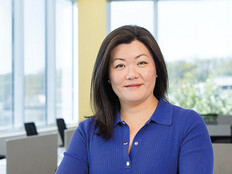LeadingAge 2019: 6 Smart Takeaways on Tech and Senior Living
As technology in the senior care space continues to evolve, providers must be prepared to employ it to meet the needs of residents while protecting their data and building for the future. It’s also an increasingly crucial part of staff recruitment and retention.
This was a central point of discussion at the LeadingAge 2019 conference in San Diego.
“Over the past couple years, we’ve seen an explosion of technology: simplified user interfaces, stimulating and appealing content, and tools designed to increase social connections, entertain, and help older adults engage with staff and caregivers,” said Majd Alwan, senior vice president for technology at LeadingAge and executive director for the LeadingAge Center for Aging Technologies.
Here are six takeaways from the conference:
1. Seniors Want Tech Today, Not Tomorrow
Needs and usage may vary but the digital divide among older adults is shrinking, said Scott Collins, president and CEO of the venture group Link-age. Although today’s seniors are going online and using tech more than their predecessors, they also want training and support.
“You have a really unique opportunity to be a resource as a trusted adviser — to be educators, to expose them to these new tools that can help them thrive,” said Collins. This connection, panelists said, can be achieved with classes, in-house tech teams and peer groups.
MORE FROM HEALTHTECH: Read all coverage from LeadingAge 2019.
2. Residential Care Centers Need Strong Infrastructure
A growing range of Internet of Medical Things devices for seniors requires that buildings are properly wired. That also will be crucial as smart devices and smart room technologies become more commonplace in living spaces — a particular challenge for aging structures.
“Technology can be integrated into every facet of a building,” said Nick Patel, president of the Asbury Group Integrated Technologies, a consulting arm of Asbury Communities. Industrywide, he said, “we’re still seeing connectivity as a major issue.”
3. Staff Shortages Will Make Assistive Tech Crucial
The senior care industry is growing at a double-digit rate, but it also faces astronomical staff turnover. Coupled with a rising population of older adults, the issue will require automation and timesaving collaboration tools to aid staff efficiency and satisfaction.
Whether an organization is large or small, “If we’re not giving employees what they desire, we’re going to lose them,” said Kathleen Weissberg, education director for Select Rehabilitation, which has 16,000 employees providing therapy services in 34 states.
4. Keep Senior Needs and Limitations in Mind
Make sure that the tools you bring in meet residents’ abilities. Consider limitations of eyesight, mobility and dexterity, said Tom Meyers, senior managing director of Ziegler. He cited Best Buy’s recent $800 million acquisition of the company behind the Jitterbug phone for seniors.
Whether for wellness or leisure, all tools will require training among residents to ensure adoption and safety. That’s key as smart speakers take hold in patient rooms and more residences implement telehealth as a way to get seniors on-demand care or prevent hospitalization.
5. Don’t Ignore HIPAA and Security Concerns
The explosion of data collection leaves endpoints in clinical settings vulnerable to hacking or accidental exposure of data — and the hefty HIPAA violations fines that could result. This is why staffwide cybersecurity training and network segmentation are nonnegotiable.
“It’s putting immense pressure on data security and privacy structures in this industry,” said Mark Franco, an associate attorney with Whiteford Taylor Preston. “You’re not only talking about securing the device or the sensor; you need to secure the data.”
6. Plan for Growth, but Only Buy What You Need
Despite a widening pool of impressive tech, it’s crucial to have a plan before deploying a rollout. That might entail launching a pilot program of a given technology before going all-in. It also should involve a long-term roadmap that allows the flexibility to scale up in the coming years.
“We’re trying to think ahead so we don’t have to make major changes,” said Scott Buchanan, CEO of the Ohio Masonic Home, where technology initiatives are a team effort. Focus groups involving residents and staff, he said, can identify areas requiring more immediate attention.
Follow us on Twitter @HealthTechMag, or the official LeadingAge Twitter account, @LeadingAge, and join the conversation using the hashtag #LeadingAge19.









